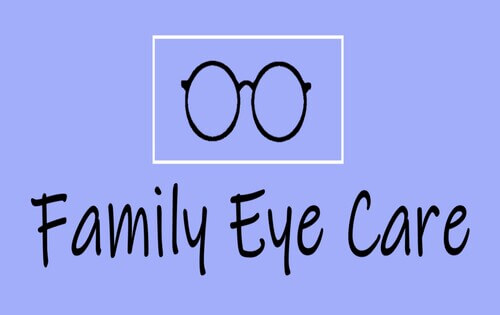The Pros and Cons of Various Refractive Surgeries for Improved Eyecare

LASIK Surgery
LASIK surgical procedure is a typically executed refractive procedure that aims to fix vision issues such as farsightedness, nearsightedness, and astigmatism. This surgical strategy has gotten appeal due to its effectiveness in giving people with clearer vision and reducing their reliance on glasses or call lenses. Throughout the treatment, a thin flap is produced on the cornea, and a laser is made use of to reshape the underlying cells, remedying the refractive error. The flap is after that rearranged, enabling for fast recovery and minimal pain for the client.
Among the key benefits of LASIK surgical procedure is the quick renovation in vision experienced by lots of people. Most people see a significant enhancement in their eyesight quickly after the treatment, with marginal downtime needed for recuperation. In addition, LASIK is recognized for its high success price and low incidence of problems when done by knowledgeable specialists. Nevertheless, like any procedure, LASIK likewise lugs some dangers, including completely dry eyes, glow, halos, and under or overcorrection of vision. It is necessary for people thinking about LASIK surgical procedure to undergo a complete examination by an eye treatment expert to determine if they are suitable candidates for the treatment.
PRK Treatment
The PRK treatment, likewise understood as Photorefractive Keratectomy, is a kind of refractive surgical treatment that intends to remedy vision concerns comparable to LASIK surgery. Unlike LASIK, which entails developing a flap in the cornea, PRK functions on the surface area layer of the cornea.
One of the advantages of PRK over LASIK is that it eliminates the risk of flap-related problems considering that no flap is developed during the surgical procedure. Despite the longer healing duration, PRK can be a suitable option for individuals seeking vision modification surgery.
SMILE Surgical Treatment
An innovative refractive surgery technique getting popularity in the field of ophthalmology is SMILE Surgical procedure. Little Laceration Lenticule Removal (SMILE) is a minimally intrusive procedure that deals with vision by reshaping the cornea making use of a femtosecond laser. Unlike standard LASIK surgical treatment, SMILE Surgical treatment includes producing a tiny incision in the cornea to draw out a lenticule, which causes much less disruption to the corneal structure and potentially quicker recovery times.
One of the main benefits of SMILE Surgery is its ability to treat myopia (nearsightedness) and astigmatism with high accuracy, bring about exceptional visual end results for individuals. The minimally intrusive nature of the treatment also decreases the threat of complications such as completely dry eye disorder, making it a favorable option for people looking for refractive surgery.

LASEK Strategy
Having actually discovered the advantages and considerations of SMILE Surgery, an additional significant refractive surgery method worth examining is the LASEK Technique. LASEK, which represents Laser-Assisted Subepithelial Keratectomy, is a type of laser eye surgery that intends to remedy refractive mistakes such as nearsightedness (nearsightedness), hyperopia (farsightedness), and astigmatism.
Unlike LASIK, LASEK does not include producing a corneal flap. Rather, during a LASEK procedure, the doctor utilizes a diluted alcohol remedy to loosen the slim outer layer of the cornea, called the epithelium. This layer is then delicately moved aside to enable the laser to improve the underlying corneal cells. Once the cornea has been improved to the desired level, the epithelial layer is repositioned.
One of the key benefits of LASEK is that it can be her explanation appropriate for people with thin corneas who may not be good prospects for LASIK. In addition, LASEK normally causes minimal post-operative pain and a quicker recovery time contrasted to PRK. The visual recovery procedure with LASEK might be a little longer than with LASIK.
Implantable Get In Touch With Lenses
Implantable Contact Lenses offer a lasting vision improvement option for people seeking an alternative to conventional contact lenses or glasses. These lenses, also understood as phakic intraocular lenses, are operatively inserted right into the eye to deal with refractive mistakes such as nearsightedness (nearsightedness), hyperopia (farsightedness), and astigmatism. eye doctors in andalusia. Unlike conventional contact lenses that rest on the surface of the eye, implantable contact lenses function within the eye itself, supplying clear vision without the demand for day-to-day maintenance or elimination
One of the vital advantages of implantable get in touch with lenses is their permanence. When put, they can remain in the eye indefinitely, more information providing consistent and stable vision modification. Furthermore, these lenses can be a superb alternative for people who are bad candidates for laser eye surgical procedure or who favor a relatively easy to fix vision modification procedure.
Nonetheless, implantable call lenses do bring some dangers, consisting of the potential for cataracts or raised eye stress. It is crucial for individuals considering this alternative to seek advice from an eye care professional to determine if implantable contact lenses are the ideal selection for their specific needs and eye health.
Conclusion
In conclusion, each type of refractive surgical procedure has its very own advantages and drawbacks. LASIK surgical procedure is prominent for its quick recovery time, while PRK procedure may be ideal for individuals with slim corneas. SMILE surgery supplies minimal pain throughout the procedure, yet LASEK method may have a longer recovery procedure. Implantable contact lenses offer a choice for those that are not ideal prospects for traditional surgical procedures. Clients need to speak with their eye treatment supplier to identify the very best option for their private requirements.

Generally, SMILE Surgical procedure presents an appealing choice for individuals looking to improve their vision via refractive surgical treatment.